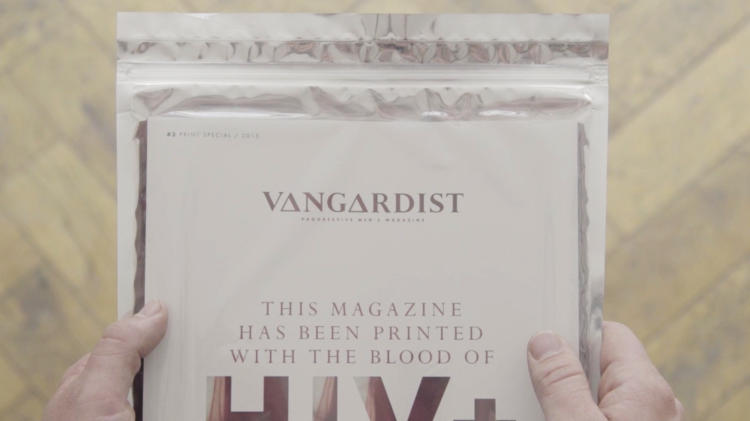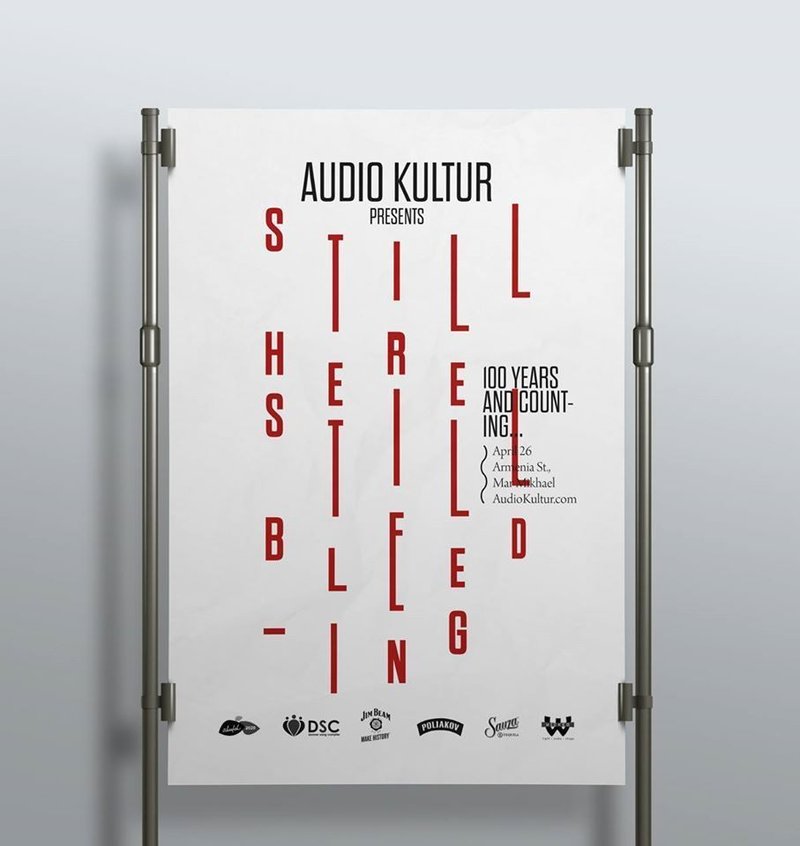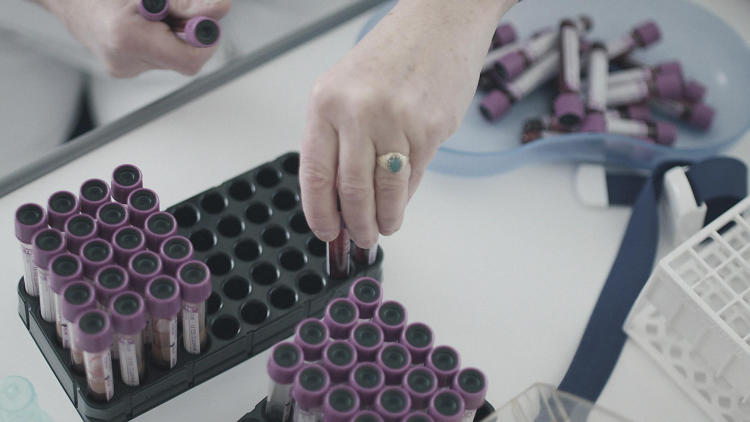The latest cover of Vangardist Magazine, a progressive men’s publication, is bound to stand out at newsstands. “This Magazine Has Been Printed With The Blood of HIV+ People,” it reads, and it’s true. It has Over 3,000 copies of the spring issue have been printed with ink containing a small amount of infected blood, as an attempt to end the social stigma of HIV in Europe and abroad.

Designed with the help of Saatchi & Saatchi, the spring issue of Vangardist is timed to coincide with the Life Ball, the biggest AIDS and HIV charity event in Europe. According to the publisher and CEO of Vanguardist, Julian Wiehl, printing a copy of the magazine in blood seemed to be the most expedient way to bring attention to a social stigma around HIV that is just as strong today as it was 30 years ago.
The magazine is perfectly safe to handle. The ink is mixed at a ratio of 28 parts ito 1 part donated blood, donated to the Vangardist by three HIV+ individuals. The blending of ink to blood was overseen by doctors at Harvard University and Innsbruck University, who certified both before and after that there was no possible way HIV could be transmitted by the magazine. Which, even without their assurances, would be quite the long shot: HIV is very sensitive to changes in alkalinity, and can’t survive the pH level of ink.
Incarnations of ink seem to be a trend right now. From Ted Lawson’s blood printer to magazine Audio Kultur‘s commemoration of the 100th anniversary of the Armenian genocide.

Image Credits: www.npr.org/blogs/thetwo-way/2015/04/24/402057823/a-most-indelible-ink-a-magazine-printed-using-blood
Audio Kultur used real blood to publish the magazine commemorating the 100th anniversary of the massacre of 1.5 million Armenians. The magazine’s editor-in-chief, Tres Colacion, said the intent was not to call for the event to be called “genocide.” (A growing number of historians, and more recently, Pope Francis, now say the Armenian killings by the Ottoman Turks, was a “genocide” — a term that Turkey rejects.)
Lebanon became home to large numbers of Armenians fleeing the Turks during World War I. While many emigrated during the Lebanese civil war, several Beirut neighborhoods remain centers of Armenian culture.
So just how do you publish in blood? The magazine approached five notable Lebanese-Armenian artists, from musicians to designers. Phlebotomists drew the blood, collecting it in vials. Then a bright red coagulated goo is poured into the printing presses. The words, “Still Here, Still Bleeding” are printed on the cover of the magazine. Blood was also used to silk screen 50 posters to publicize a musical and cultural celebration.
If you into bio-hazardous materials used in art, do also check out Anna Dumitriu’s tuberculosis infused felt work and several of her dresses stained with strains of virus.
Image Credits: fastcodesign.com






